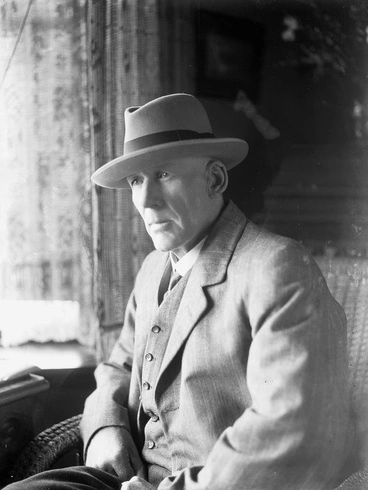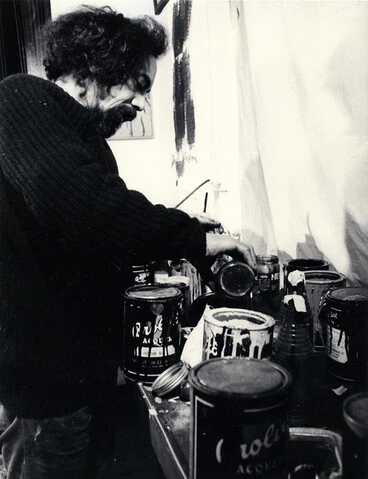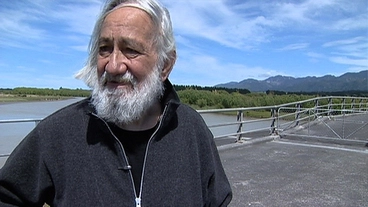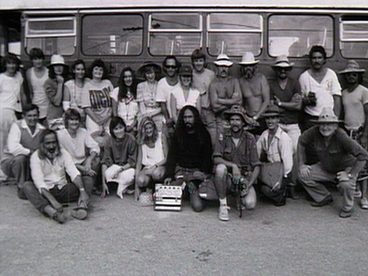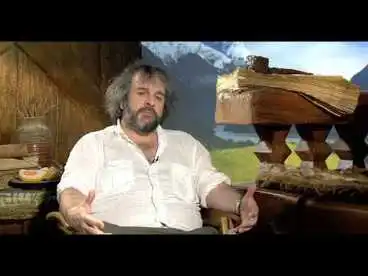New Zealand Film
A DigitalNZ Story by Emani Jones
The art form of film has been around for centuries mainly in Europe and America, but the young and budding country of New Zealand was late in creating its place in the film industry. The following is a chronological account of New Zealand finding its place and creating its own style and voice unique to its culture and landscape.
Rudall Hayward
Known as the pioneer of NZ film, Hayward began filming in the 1920s. He captured the unique history and landscape of NZ.
Alexander Turnbull Library
Rewi's Last Stand 1925
Directed by Hayward, this was first filmed as a silent film and depicts a battle from the New Zealand Land Wars.
Manatū Taonga, the Ministry for Culture and Heritage
Rudall Hayward is the cinematic pioneer in New Zealand. Born in England in 1900 and then moving to New Zealand four years later, he was inspired by the history of the land of which was preserved by historian James Cowan. He created films that reenacted historical scenes such as battles from the New Zealand Land Wars. One of such films is Rewi's Last Stand which depicts when "the last battle of the Waikato War began when the spearhead of a strong British force charged an apparently weak Māori position at Ōrākau, south-east of Te Awamutu. After two frontal assaults failed, the British besieged the pā."[1] The first filming of this movie in 1925 was a silent film that was lost with no existing copies. Although unfortunate, this allowed Hayward to more consciously remake the film by casting Māori and Pākehā descendants who were there during the battle. [2] And although the battle was a loss for the Māori, it's apparent that Hayward respected the techniques and resilience of the Māori in battle just as James Cowan.
Cowan was raised on a kihikihi farm, land taken from the Maori during the land wars, sparking his interest in NZ history
James Cowan
Manatū Taonga, the Ministry for Culture and Heritage
New Zealand Wars Drawings by James Cowan
This drawing shows how Cowan respected the war strategies of the Maori
Manatū Taonga, the Ministry for Culture and Heritage
The remake of Rewi's Last Stand exemplified the progressive nature of New Zealand at the time. The year 1940 marked the year of the centenary of the signing of the Treaty of Waitangi [Keith, Fox, Radner, 2011, p58] in which time much had changed in race relations between Maori and Pakeha in New Zealand. For one, the love affair between the Maori woman Ariana torn between the Maori and Pakeha world and Pakeha man Robert Beaumont, played by Ramai Te Miha and Leo Pilcher respectively, showed a future of equal status and assimilation between the two races. It may have even been inspired by Haywards own marriage to Te Miha. [3] But Hayward's depiction of Maori people also created a stock narrative of the "dusky Maori maiden...depicted as seductive in their beauty and wantonness, while Maori warriors were presented as matchless in their valour and martial pride"[Keith, Fox, Radner, 2011, p48]. This became the essence of Maoriland, a genre in film and literature that depicted New Zealand as a vast and empty scenic landscape with savages, maybe on the alluring side, who could be civilized. This also worked as a form of propaganda or advertisement to attract Europeans to the wild lands of New Zealand. So although Rewi's Last Stand offers a more progressive depiction of race relations in New Zealand, it also lent to the problematic stereotypes of the Maori people.
National Film Unit
The NFU was established in 1941 after persistent lobbying.
Archives New Zealand Te Rua Mahara o te Kāwanatanga
New Zealand Film Commission
Alexander Turnbull Library
Although works by Hayward and others during his time gained some success, it was not much in comparison to Europe and America's Hollywood. Most films followed the genre of Hayward's, backed by the National Film Unit established in 1941 "to produce documentary material in the form of government films and newsreels" [Dunleavy, Joyce, 2011, p72]. The New Zealand government still did not see film as a medium worth funding which resulted in filmmakers and artists demanding funding. After persistent lobbying at the Queen Elizabeth II Arts Council's national conference in the early 1970s, the Film Industry Working Party was established. Filmmakers who made documentaries benefitted most from this funding, but independent filmmakers who wanted to create different content were not as favored. Eventually the New Zealand government began offering funding through the formation of the New Zealand Film Commission in 1978. The initial offer was for NZ$1.5 million to be used over a three year period. In comparison to Hollywood films, this was not much, but it still provided financial security and government support for the independent production sector. This allowed New Zealand filmmakers to create a unique style of film for the country instead of imitating as quoted by the Interim Film Commission: "We are not aiming to establish a romantic Hollywood of the South Pacific...On our farms, our cities, are maraes, our beaches, our battlegrounds, and close to our homes, New Zealand film-makers have captured visual images of the way we are and the way we feel and think [Dunleavy, Joyce, 2011, p79]. All that makes New Zealand unique culturally, ethnically, and historically could now be used to create a unique narrative.
From 1978 to 1982 there was a tax shelter that stated that "investors in New Zealand-produced feature films were able to reduce their tax liability as well as to share in any potential income" [Dunleavy, Joyce, 2011, p83]. This created even more funding for the film industry, in which time eleven films were made with only four using the funds from the NZFC. At the end of the tax shelter era, there were no more individual investors in film; but, the infrastructure, expertise, and experienced filmmakers still lasted and launched New Zealand into a new cinematic era.
Barry Barclay
Barclay was the first Indigenous filmmaker to direct a feature film.
NZ On Screen
Maori Renaissance
Maori began to embrace their almost forgotten culture, rejecting the need to assimilate.
Manatū Taonga, the Ministry for Culture and Heritage
Peter Jackson
Peter Jackson talks on why he chose New Zealand as the setting that J.R.R. Tolkein describes in his books.
Tourism New Zealand
When discussing what it means to be a New Zealand film, it is important to acknowledge all of the diverse perspectives that come with the term New Zealander. Barry Barclay saw that in the world of film, there was a striking lack of representation from the Maori people. Although they had been cast in movies as far back as Rewi's Last Stand, they were still not in positions of controlling their narrative such as a director or producer. With the release of Ngāti in 1987, Barclay became the first Indigenous person to direct a feature film. In his own right, he is a pioneer when it comes to indigenous representation all over the world. He created the concept of fourth world cinema which is cinema made by and about indigenous people [4]. As Stuart Murray stated, "Barclay is aware that Maori filmmaking is only an extension of being Maori withinNew Zealand. The complexities of film production- of funding, script development, crewing, promotion and more- enact the wider questions of prejudice and belonging that characterize participation in the national culture as a whole" [Murray, 2007, p100]. Ultimately it's not enough to just have Maori actors anymore with the increasing population and presence of Maori people.
On the other hand, New Zealand as a land and tourist destination has also increased its presence with the filming of the Lord of the Rings and The Hobbit trilogies Directed by Peter Jackson. These films feature mythological creatures set to the backdrop of the rolling and and impressive peaks of New Zealand. To the international audience, this draws attention to the natural beauty of the land, while also going back to the propaganda narrative of an empty and vast land. [5]
Bibliography
Barclay, Barry. Celebrating Fourth Cinema. http://learn.canterbury.ac.nz/mod/resource/view.php?id=184491
Dunleavy, Trisha and Hester Joyce. New Zealand Film and Television : Institution, Industry and Cultural Change. Intellect Books Ltd., 2011.
Keith, Barry, Alistair Fox, and Hilary Radner. New Zealand Cinema: Interpreting the Past. Intellect Books Ltd., 2011.
Martin, Helen. Rewi’s Last Stand 1940. https://teara.govt.nz/en/interactive/42468/rewis-last-stand-1940
Murray, Stuart. “Images of Dignity: The Films of Barry Barclay”. Detroit: Wayne State University Press, 2007.
New Zealand History. Rewi’s Last Stand?. https://nzhistory.govt.nz/page/rewis-last-stand
The University of Waikato. The Lord of the Rings and how people think about New Zealand. https://www.waikato.ac.nz/news-events/media/2013/the-lord-of-the-rings-and-how-people-think-about-new-zealand

